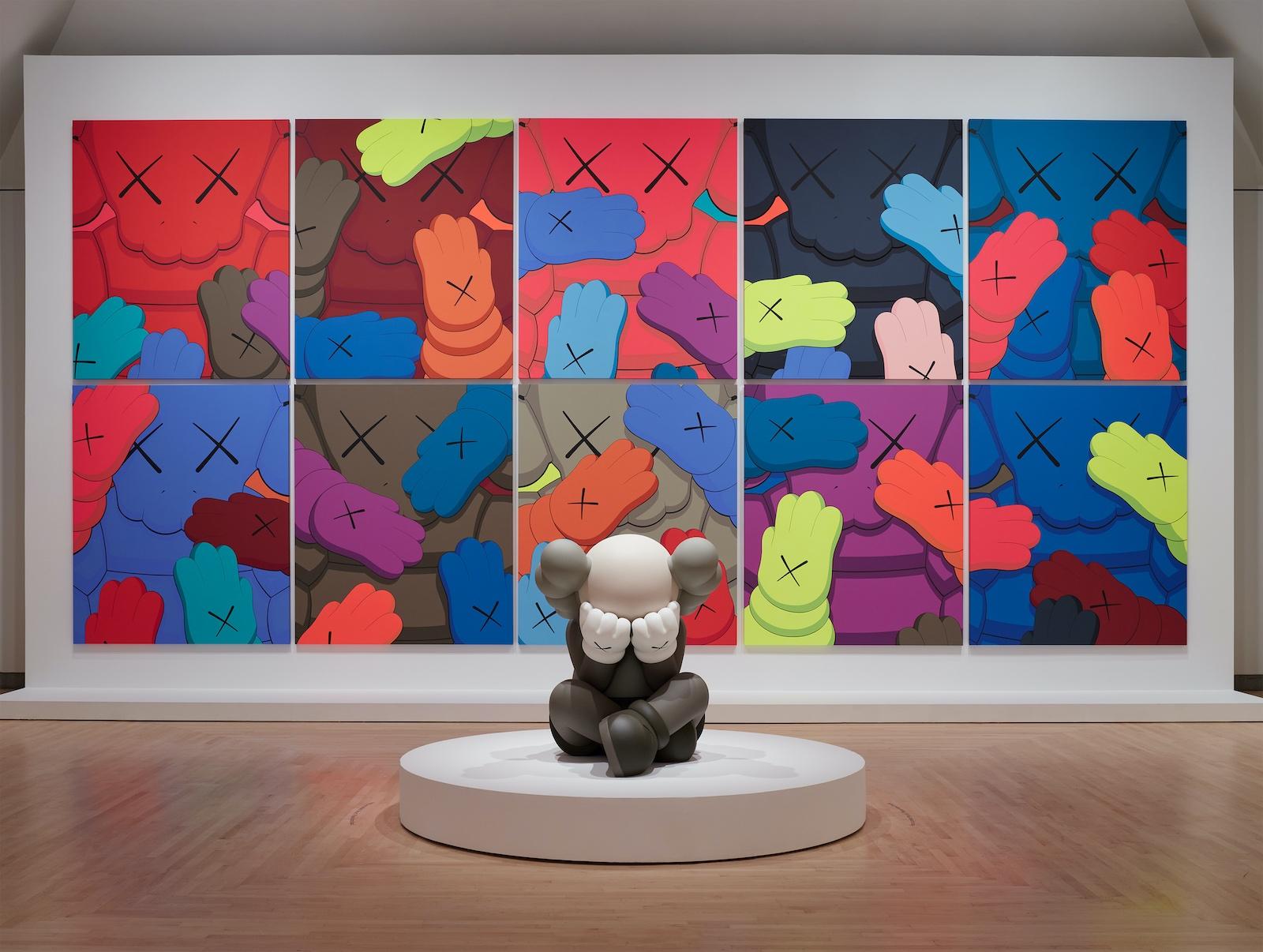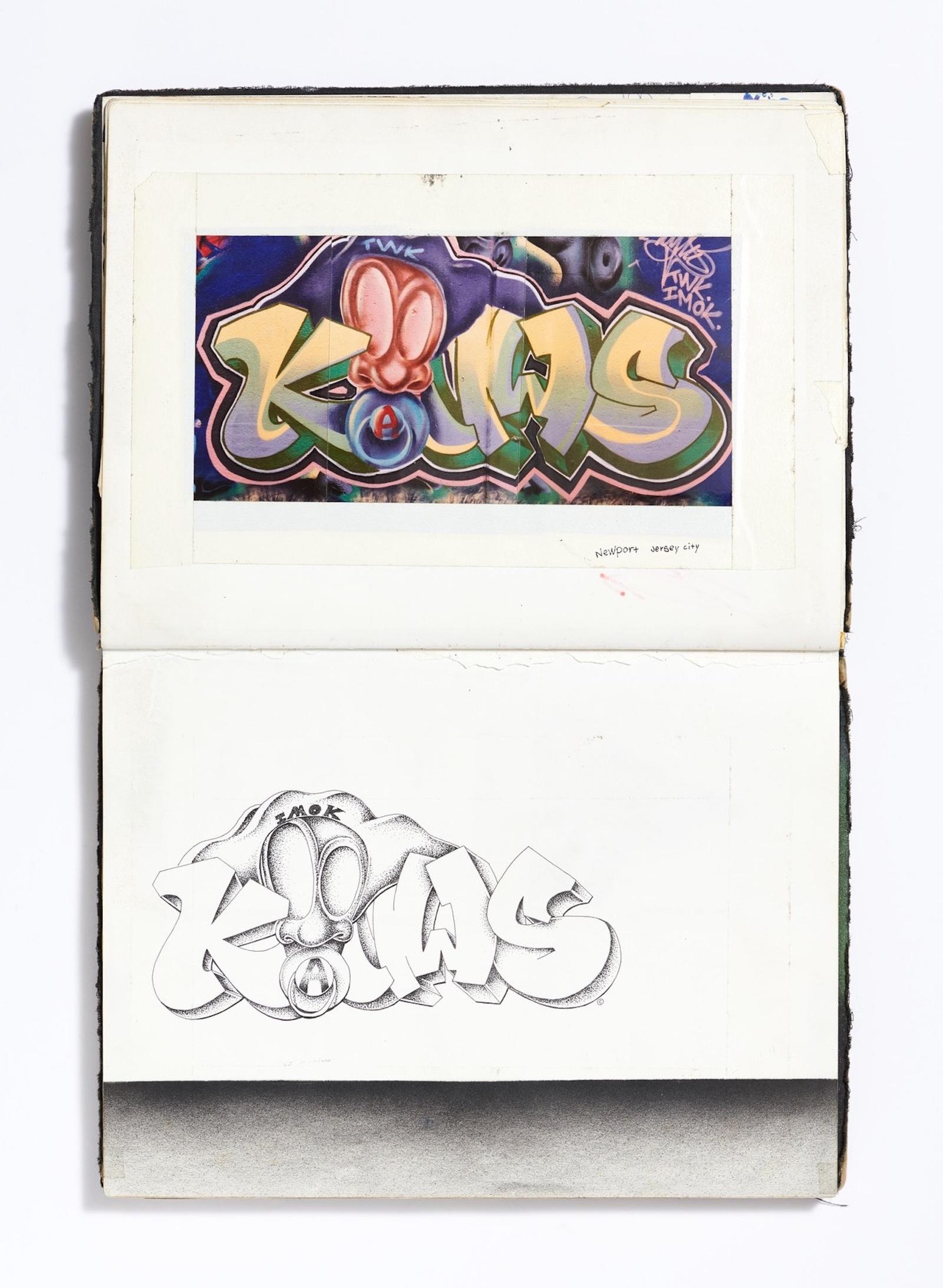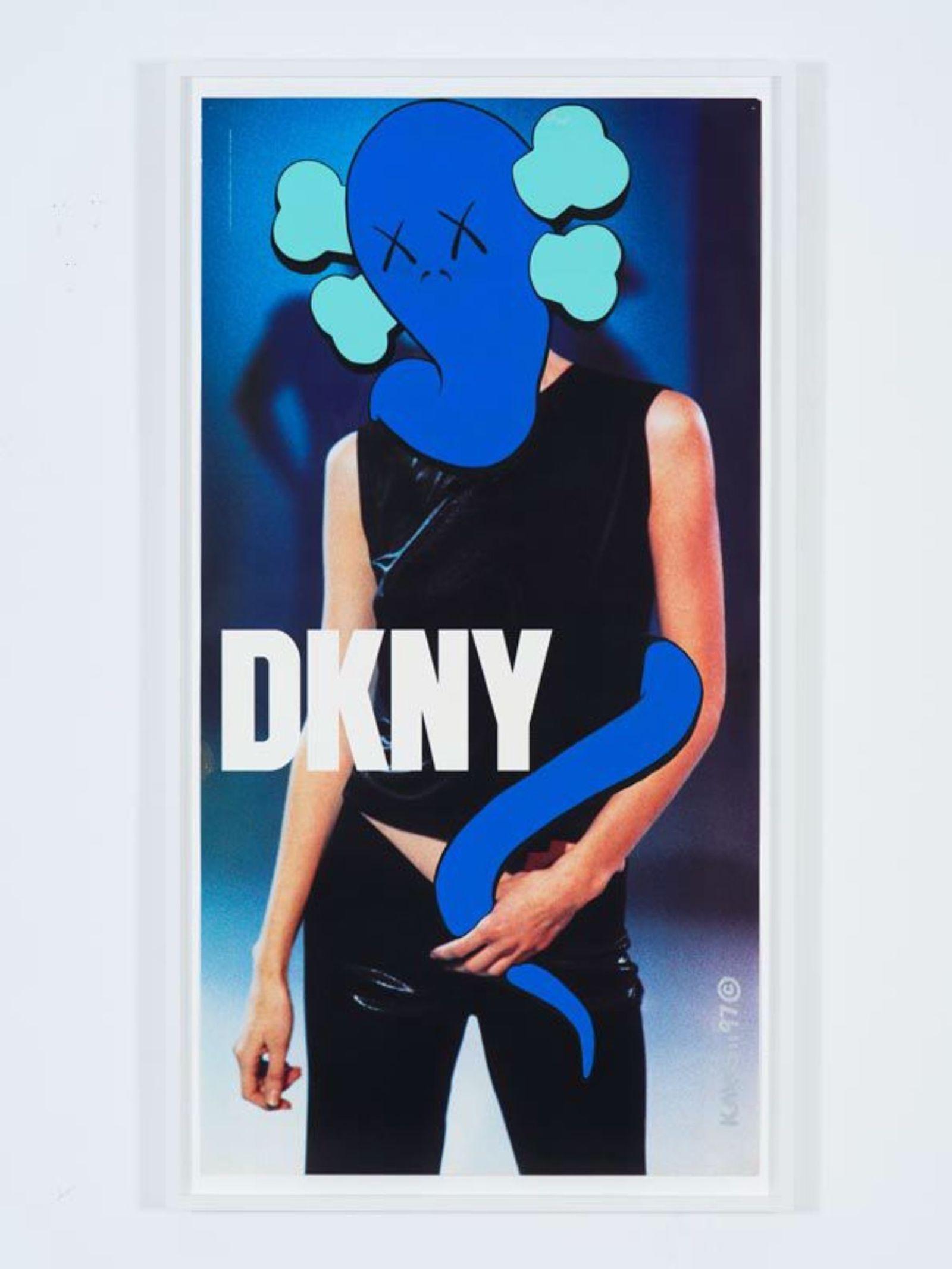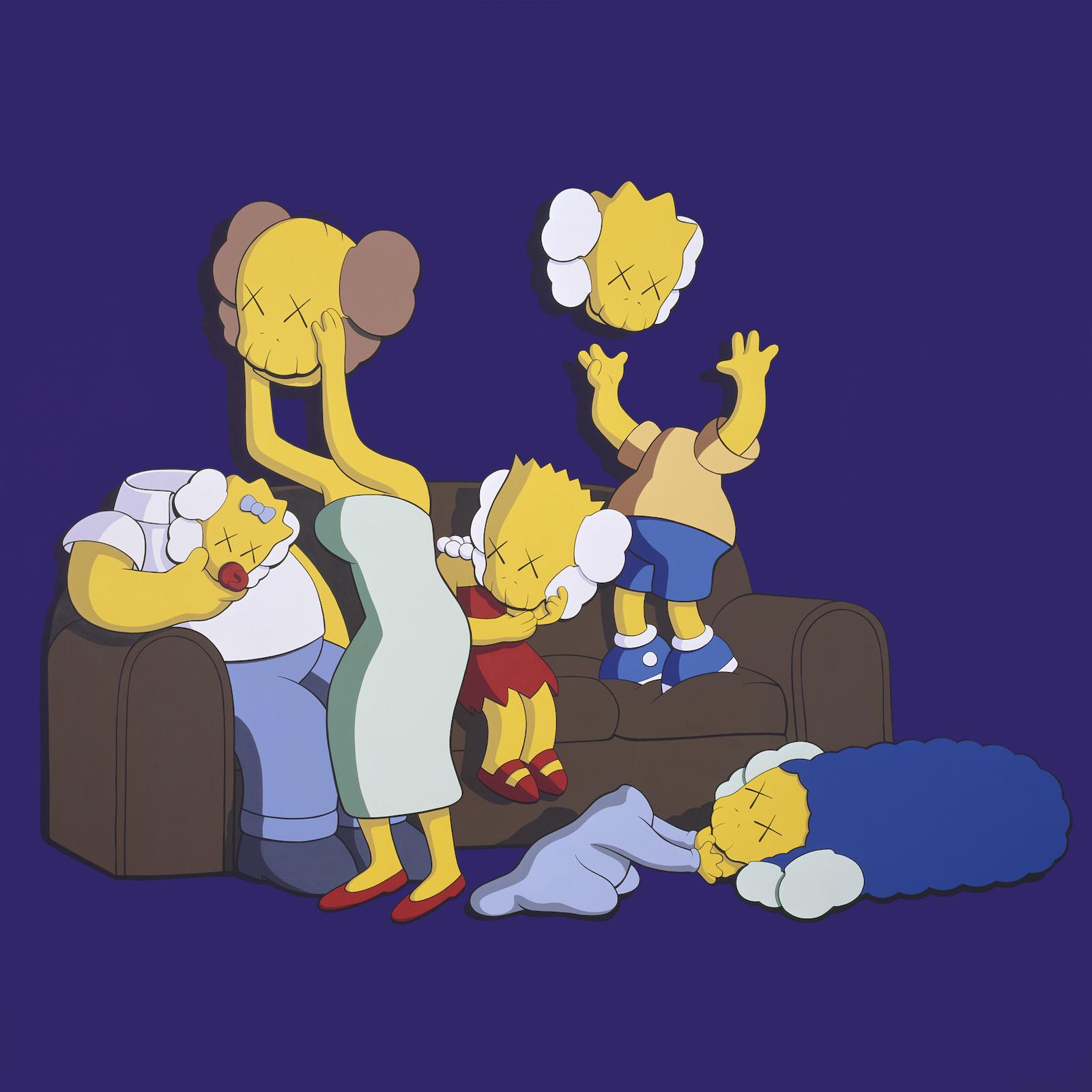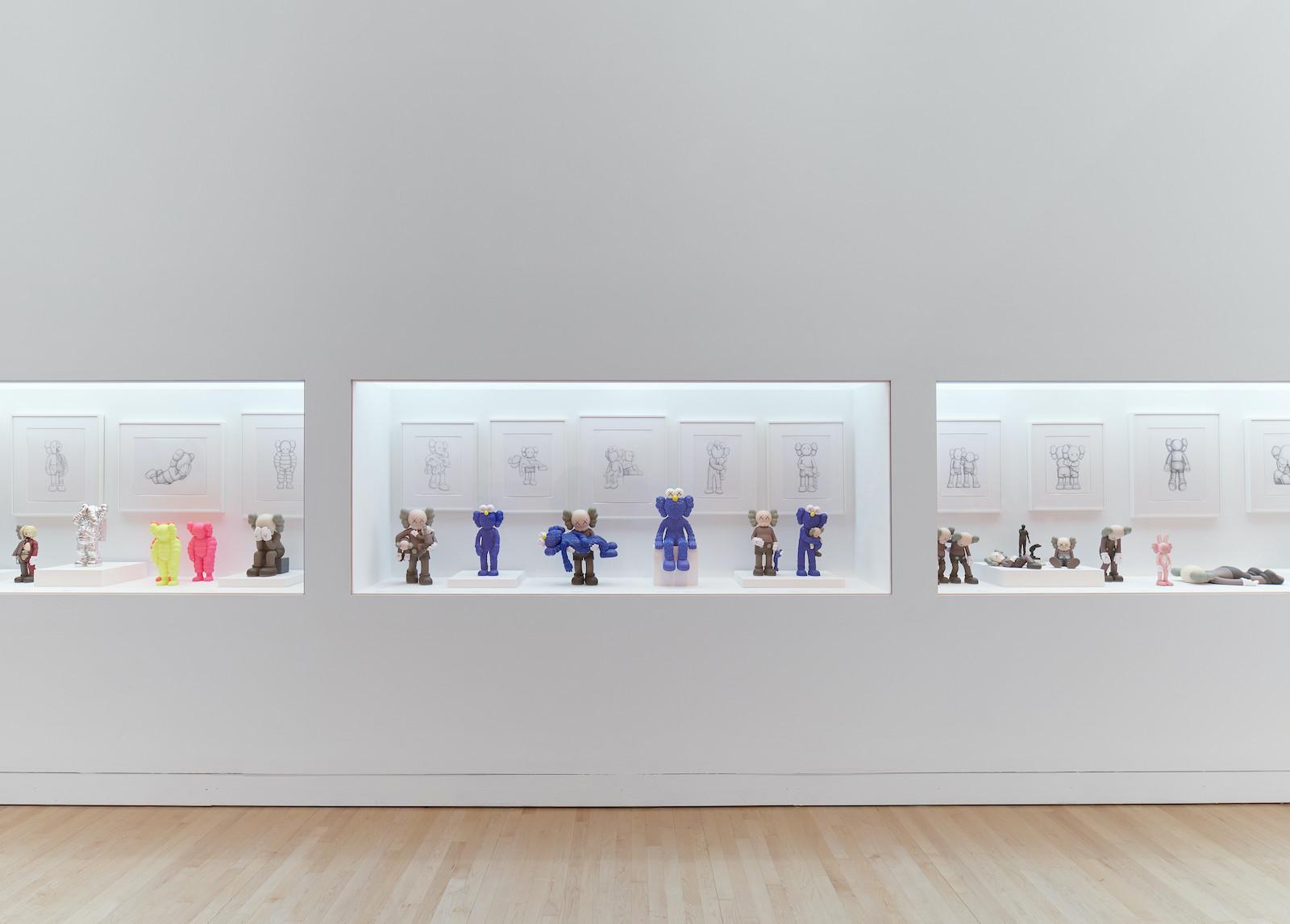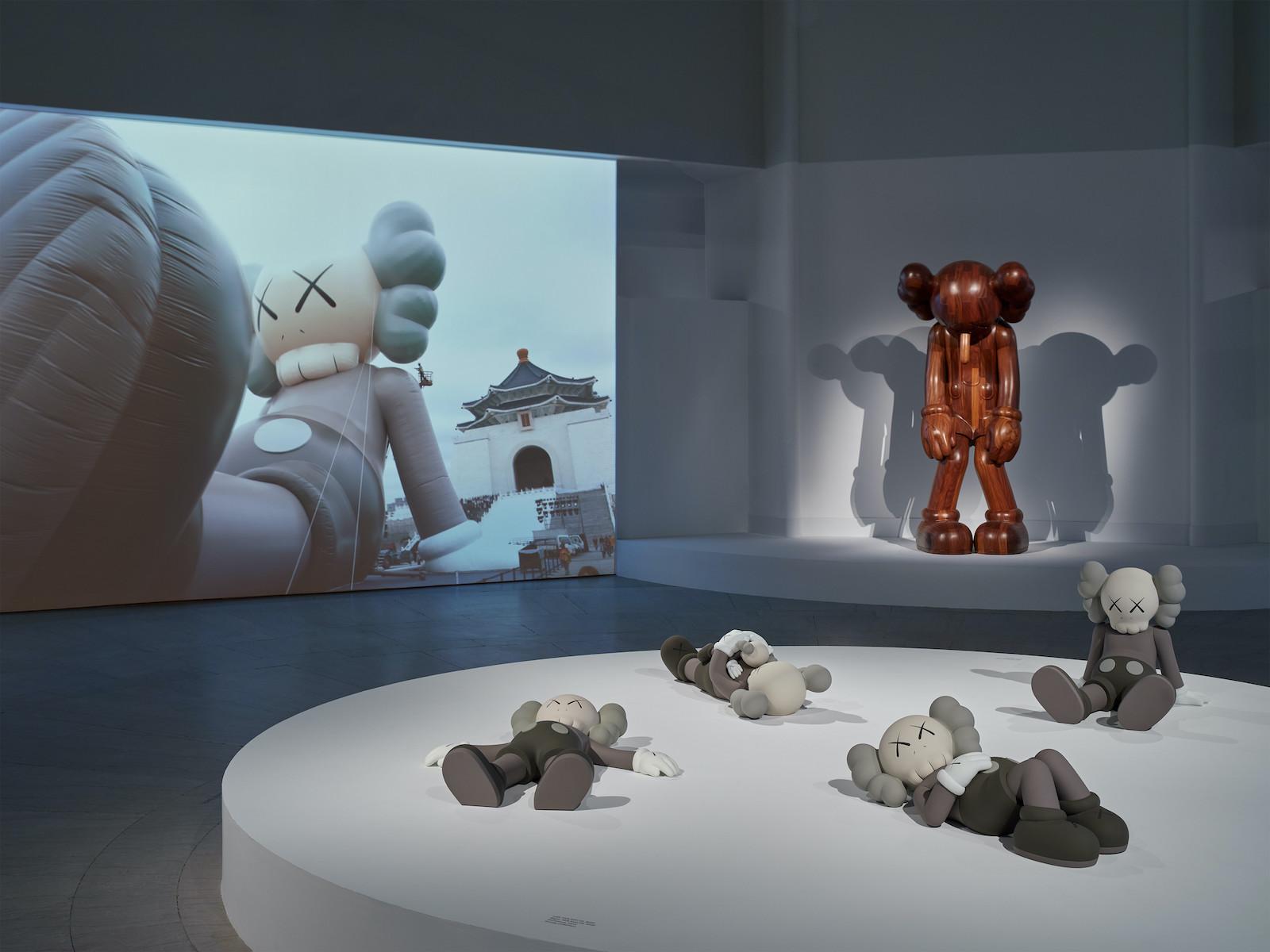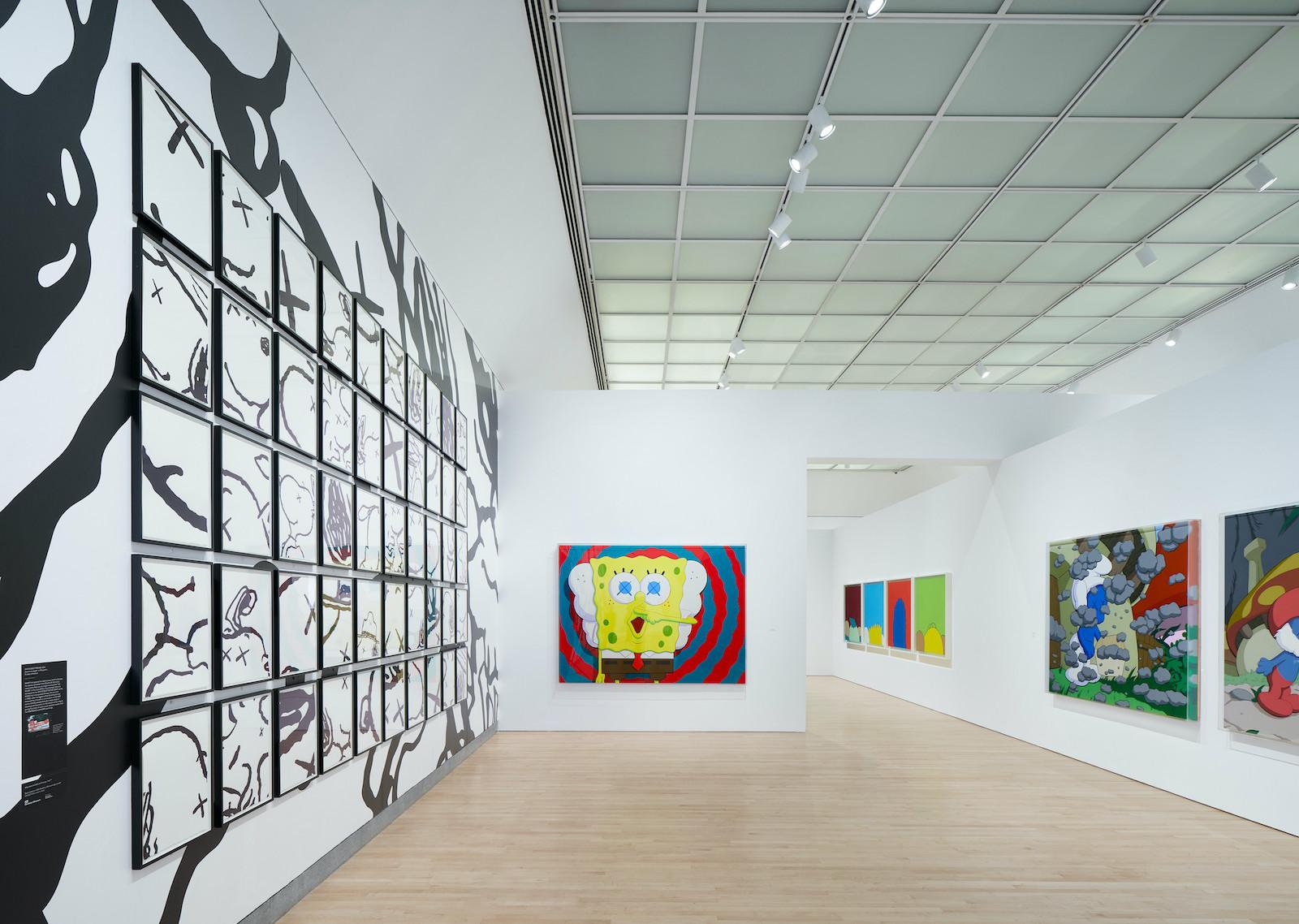“I was looking for interesting ways to interact with the image,” KAWS told this writer in a 2012 interview for FLATT Magazine. “I felt the ones that wrapped around the subjects worked really well with the fashion advertisements that I was going over. It was really about color and composition and how it read—as part of the ad rather than on top of it. I wanted people to do a double-take and wonder what they were looking at.”
There are four examples of these altered ads in the exhibition. One of them shows a model wearing a bra in a Maidenform ad with a skull and crossbones head and X-ed out eyes, while the other three show a spermazoidal character (the artist’s BENDY figure) with a similar head embracing the subjects in the ads, with two of them being female fashion models. However, one of the manipulated ads is revealing in another regard, because BENDY is wrapping an image of Keith Haring from the poster for his 1997 Whitney Museum retrospective. The image shows Haring making a chalk drawing on the black paper used to cover expired subway ads—an action that was directly related to what KAWS was doing by co-opting commercial space for his art.
In that same year, KAWS began visiting Japan, where he infiltrated the subculture of graffiti, fashion, and toys and soon began collaborating with the fashion brand A Bathing Ape and the toy producer Bounty Hunter. In 1999, he produced his first editioned object, COMPANION, a vinyl toy figure with his signature skull-like, eyeless head on the body of a Mickey Mouse-sort-of-character wearing shorts, gloves, and booties. The success of these commercial projects led to increased notoriety and both the money and opportunity to make more works for exhibitions.
“I always find an artist’s early work fascinating because there are so many clues about their interests and then you can see where they subsequently decide to go,” Tsai notes. “It’s not a linear thing—you just see the seed and then discover that they decided to pick up on this in one body of work and then they are working on that. The idea of branding—of putting yourself out there as a graffiti artist—relates to KAWS’ making of toys, which can travel in the world in the manner that graffiti writing does and make [their] way into all kinds of unsuspecting homes and corners of society.”




